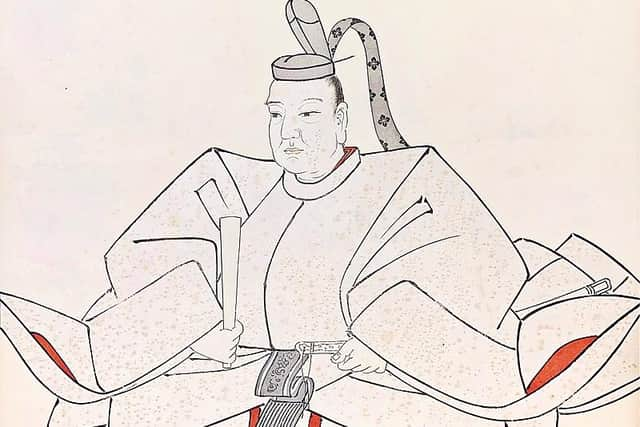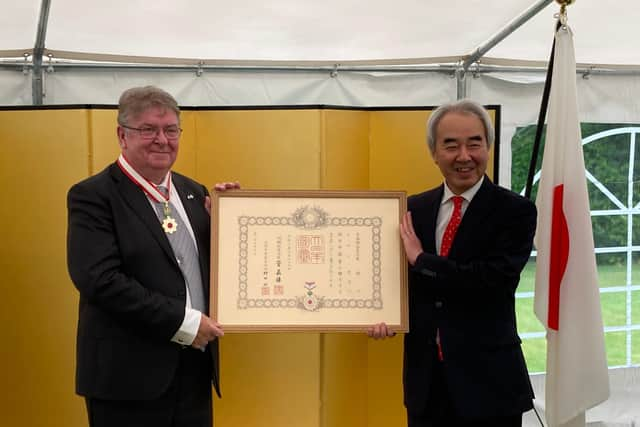Edinburgh professor unearths evidence of first Scot to forge links with Japan
and live on Freeview channel 276
Professor Ian Gow OBE, who also chairs the Japan Society of Scotland, says he has the documents to prove Leith-born mariner Henry Shanks lived in the Land of the Rising Sun in 1618 – a full 241 years earlier than the arrival of Fraserburgh industrialist, Thomas Blake Glover, who is renowned as the man who sowed the seeds of Japanese automotive giant Mitsubishi.
According to Prof Gow’s research, Henry, or Harry, Shanks was the first of a trio of Scots who ventured to Japan around 1620.
Advertisement
Hide AdAdvertisement
Hide AdHe had been a gunner aboard a Spanish vessel in East Asia, before jumping ship and seeking shelter in Hirado, where there was an English factory.


The English were among a select band of European nations, including the Dutch, Spanish and Portuguese, busy setting up trading posts throughout East Asia in the early 17th century.
Englishman William Adams, who was shipwrecked off Japan in 1600, is the earliest recorded British person to forge links with the country.
The story of Adams, who was famously awarded samurai status, has been told extensively in numerous books and films.
Advertisement
Hide AdAdvertisement
Hide Ad

Until now, however, Scotland’s pre-1633 Japan links – the year the Tokugawa shogunate closed the country off to all westerners minus the Dutch – have largely been ignored.
Studying Shanks, who is believed to have been born in Leith around 1560, Prof Gow learned the errant gunner arrived in Hirado with no money, no clothes and was taken in by bosses at the English factory, who promised him a trip back to Scotland on the next ship. However, all did not go to plan.
Speaking to The Scotsman, Prof Gow said: “Many assume Thomas Blake Glover was the first Scot in Japan, but I’d like to show that this is incorrect. Henry Shanks’s arrival in Hirado predates Glover by more than two centuries.
"Initially Shanks was found to be good company, but he gained a reputation for heavy drinking, womanising and violence – all par for the course in those days for lower deck crewmen.”
Advertisement
Hide AdAdvertisement
Hide Ad

When the Hirado factory closed, Shanks, who was almost certainly unaware of his pioneering status, joined the East India Company. He passed away in the East Indies in 1624.
True to his Leith roots, however, Shanks belied his seedy repute by leaving his estate to a port charity catering for fellow seamen.
"Shanks was a Leith man,” says Prof Gow, “and he left all the money he had to the Trinity House Hospital for mariners, which is now the Trinity House Maritime Museum.”
Prof Gow, who earlier this month joined Thomas Blake Glover in receiving Japan’s highest honour for foreigners, the Order of the Rising Sun, says he would like to see Trinity House become a focal point for Japanese visiting Edinburgh.
Advertisement
Hide AdAdvertisement
Hide AdHe said: "Japanese people famously love making connections to their homeland and I think there’s a great opportunity here to create an attraction, telling the story of Henry Shanks and celebrating Scotland’s links with Japan.
"I have already spoken with Japan’s consul general, who has shown support for an exhibition to take place at Leith’s Trinity House.”
A message from the Editor:
Thank you for reading this article. We're more reliant on your support than ever as the shift in consumer habits brought about by coronavirus impacts our advertisers.
If you haven't already, please consider supporting our trusted, fact-checked journalism by taking out a digital subscription at https://www.scotsman.com/subscriptions.
Comment Guidelines
National World encourages reader discussion on our stories. User feedback, insights and back-and-forth exchanges add a rich layer of context to reporting. Please review our Community Guidelines before commenting.
